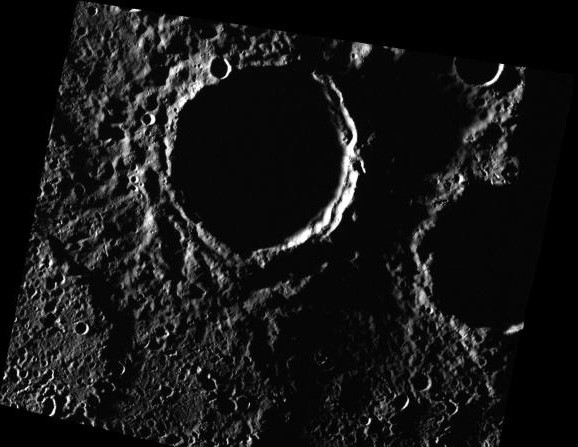Scorching hot Mercury is icier than previously thought
Scientists have discovered huge deposits of ice on the closest planet to the Sun.

Mercury may seem like an unlikely place to find vast stores of ice given its proximity to the Sun but previous research has shown that frozen water does exist on the surface. Now, a new study from Brown University suggests that there may be much more ice than previously thought.
The work, published in the journal Geophysical Research Letters, has located three new craters near Mercury's north pole which appear to host large ice deposits. They also found evidence of numerous smaller scale deposits both inside craters or in their shadows.
The team estimates the total area of the ice sheets in the three craters to be around 3,400 square kilometres.
"The assumption has been that surface ice on Mercury exists predominantly in large craters, but we show evidence for these smaller-scale deposits as well", said Ariel Deutsch, the lead author of the study author. "Adding these small-scale deposits to the large deposits within craters adds significantly to the surface ice inventory on Mercury."
Scientists first began to suspect that Mercury might have frozen water in the 1990s when radio telescopes observed highly reflective regions at the poles. Because the planet is not tilted like the Earth, its poles receive very little direct sunlight, while the floors and shadows of some craters get no sunlight at all. In addition, with almost no atmosphere, there is nothing to trap heat from surrounding surfaces meaning temperatures on some parts of the planet can fall to as low as -170 °C.
The new findings were made after researchers re-analysed data from Nasa's MESSENGER probe which entered Mercury's orbit in 2011, locating areas of brightness and reflectivity which had not been spotted before.
How exactly this polar ice may have found its way to Mercury remains a mystery though, Deutsch said. The popular hypothesis is that a comet, or asteroid, rich in water crashed into the planet at some point in its history. Other scientists argue that hydrogen may have been delivered to the surface by solar winds – streams of charged particles released from the sun's upper atmosphere - later combing with an oxygen source to form water.
"One of the major things we want to understand is how water and other volatiles are distributed through the inner solar system—including Earth, the Moon and our planetary neighbours," said Jim Head, a co-author of the research. "This study opens our eyes to new places to look for evidence of water, and suggests there's a whole lot more of it on Mercury than we thought."
© Copyright IBTimes 2025. All rights reserved.





















